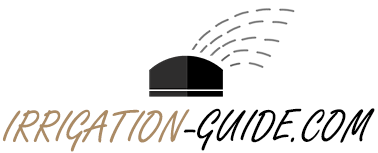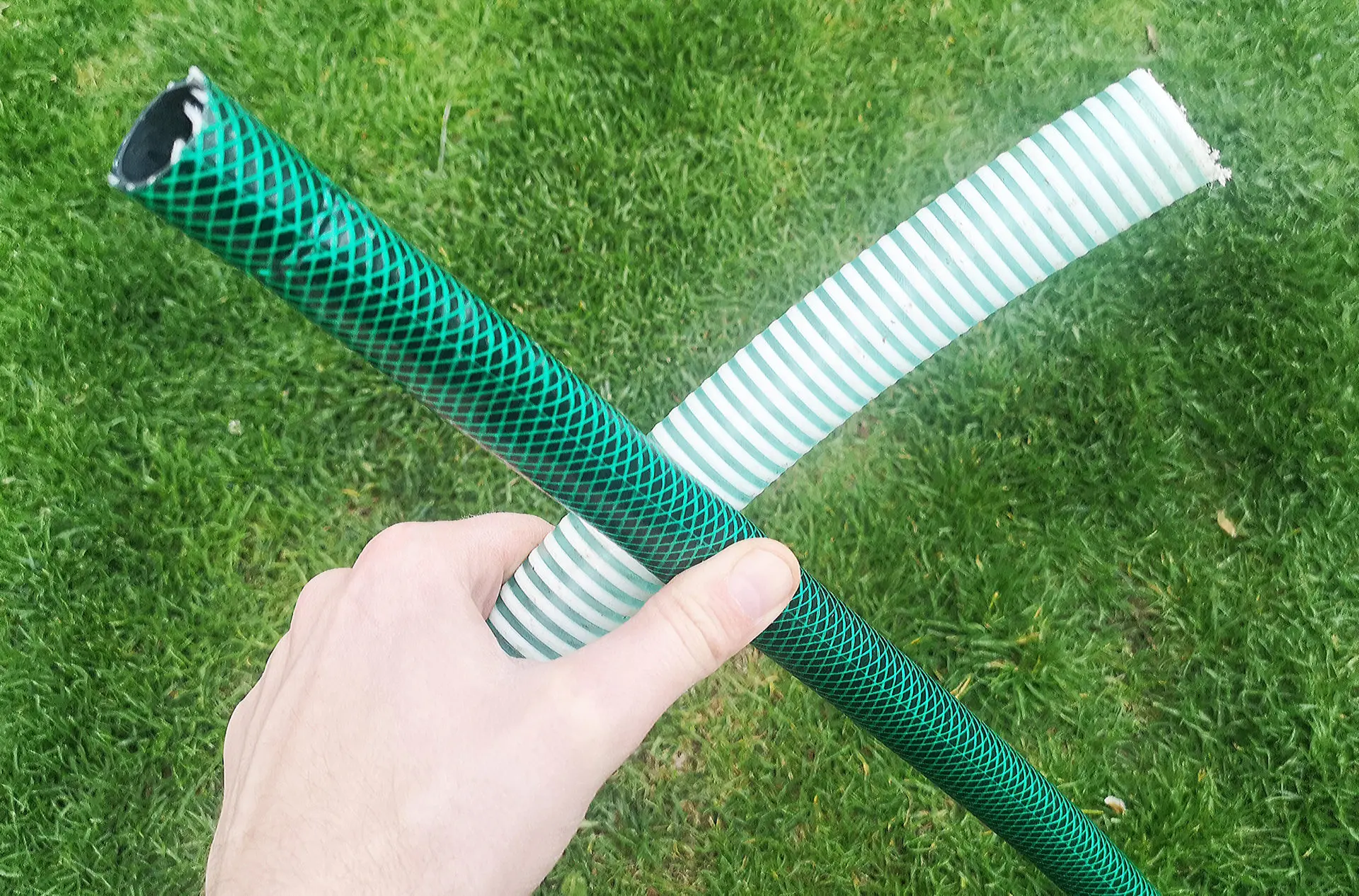The following article answers the question of how suction hoses and pressure hoses differ and for which application you need which of the two hoses.
With suction pumps, which are the usual garden pumps, a distinction is made between the pressure side and the suction side of the pump. The suction side is the side where the water is sucked out of the well or a cistern using negative pressure, while on the pressure side the water is transported to the point of use using positive pressure.
The suction hose is used on the suction side of the pump, the pressure hose on the pressure side. A distinction must be made between these two types of hoses because they have to meet very different requirements.
Requirements for a suction hose
The pump generates a small negative pressure on the suction side, so suction hoses, unlike pressure hoses, have very low requirements in terms of pressure resistance, so they do not need to withstand a high maximum pressure. In return, there are high requirements for the hose’s dimensional stability. For this reason, suction hoses are made of hard PVC or reinforced with integrated metal spirals. This prevents the hose from contracting due to the negative pressure that prevails when suctioning, which would result in only part of the water getting through. This would be the case if you were to use a normal garden hose as a suction hose. Suction hoses can be rolled up like normal hoses, but are somewhat stiffer and more unwieldy than these due to their dimensional stability.
You can either buy just the suction hose and then extend it according to your requirements, or you can buy a ready-made suction hose set. In addition to the suction hose, this also contains the following:
- Connection piece to the pump
- Foot valve
- Suction basket
The foot valve is a check valve that prevents the water from flowing back from the hose into the well or cistern after the irrigation has stopped. This would be very disadvantageous because the pump would then have to pump again and fill the hose again every time and it would always take a long time until water was available. The suction basket serves to protect the hose and the pump from coarser contamination.
Of course, you could also buy these components separately and install them on the suction hose yourself, but the fully assembled suction hose set costs hardly any more than buying the components individually and also has the great advantage that you can be sure that all connection points are correctly sealed. It can be quite difficult to get this right on your own.
The dimensions of the connection piece must be selected to match the suction outlet of the pump, most often this is a 1 inch outlet. If the hose and suction outlet do not match in terms of the internal and external threads, you can use an intermediate piece. With this, it is also possible to increase or decrease the dimensions of the connection, although you should definitely stick to the recommendations of the pump manufacturers, who in many cases specify which size hoses fit the pump.
The length of the suction hose is chosen so that it ends at the right place in the well or cistern. In the well, this is ideally the zone slightly above the filter area of the well pipes.
Suction hose sets on Amazon:
Auto Amazon Links: No products found.
For your information: When negative pressure is mentioned in connection with suction pumps, this is always meant in comparison to the ambient pressure (atmospheric air pressure), which is usually assumed to be 14.7 psi on average. If the pressure on the suction side is reduced absolutely to, for example, 13 psi, i.e. 1.7 psi below the air pressure, then there is a relative negative pressure of 1.7 psi compared to the ambient pressure. This negative pressure ensures that water flows in from the well or cistern, so strictly speaking the water is not sucked in by the pump, but the pump creates a negative pressure and this causes the water to flow in. Since the air pressure is 14.7 psi, in an extreme case, if the absolute pressure on the suction side were reduced to 0 psi by creating an absolute vacuum, a maximum negative pressure of -14.7 psi could be created. This is also the reason why suction pumps can only pump water from a maximum depth of about 33 feet (in practice even more likely to be only 23 feet): The maximum possible negative pressure of -14.7 psi is sufficient in the best case to move a column of water of 33 feet, since each foot of water level creates a pressure of about 0.45 psi.
Requirements for a pressure hose
For a pressure hose, i.e. the “normal” hose that you use in the garden for watering or to transport water from the pump to another location, the hard currency is the maximum permissible operating pressure. On the pressure side of the pump, the water pressure is much higher than on the suction side and the hose used must withstand this pressure without being damaged or bursting.
Manufacturers include the operating pressure in their sales offers. Sometimes the burst pressure is also specified instead, which is many times higher than the permissible operating pressure, usually 3 to 4 times higher.
With a pressure hose, dimensional stability plays a role in that the hose should be flexible, but not kink or twist during use.
The required diameter of the pressure hose depends on the intended use. 1/2 inch hoses are used for normal watering in the garden. If you need larger amounts of water, e.g. to fill the pool, then 3/4 inch hoses are suitable. If the first step is just to transfer the water from the pump to another location, then larger hoses with a 1 inch dimension are also suitable, as they minimize the pressure loss when transferring water. How pressure hoses differ, what quality levels there are and when it is best to use a 1/2 inch or a 3/4 inch hose in the garden are all answers I provide in detail in the following blog post about garden hoses.
Pressure hoses on Amazon:
Auto Amazon Links: No products found.
Suction and pressure hose
There are also models available that can be used as both a suction hose and a pressure hose, i.e. they are very dimensionally stable due to the incorporation of a spiral or due to the material used and can withstand a higher maximum pressure at the same time. Armored hoses are not suitable as suction hoses in every case, but only if they have a metal spiral built into them, which prevents them from contracting under negative pressure.
The distinction between suction hose and pressure hose is irrelevant for submersible pumps. Submersible pumps such as deep well pumps or cistern pumps are not suction pumps, but pressure pumps. They do not suck in the water, but stand in the water and push it upwards through the pumping activity. There is therefore no suction side, only a pressure side. And here too, you normally do not use a hose but rather a rigid PE pipe, since large torques are released when the pump starts and a hose could twist. A pressure hose may only be used after the PE pipe.

